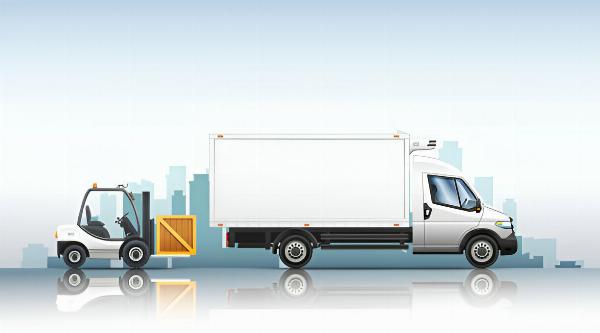Driving Success: A Comprehensive Business Plan for Launching a Box Truck Venture in the USA

Strong 8k brings an ultra-HD IPTV experience to your living room and your pocket.
Introduction
Starting a box truck business in the USA can be a lucrative venture for entrepreneurs seeking to enter the logistics and transportation industry. With the increasing demand for freight transport, especially with the rise of e-commerce, a well-thought-out business plan is essential for success. This article outlines the key components of a box truck business plan, providing insights into market analysis, financial planning, operational strategies, and marketing tactics.
1. Executive Summary
The executive summary provides an overview of your business idea, highlighting its objectives, mission statement, and the unique selling proposition (USP). For a box truck business, the focus could be on providing reliable and cost-effective freight transportation services for local businesses, e-commerce companies, and individuals.
Mission Statement
To deliver exceptional transportation services while ensuring customer satisfaction through reliability, efficiency, and professionalism.
Objectives
Establish a fleet of box trucks tailored to diverse transportation needs.
Achieve a customer satisfaction rate of 95% or higher within the first year.
Attain a revenue of $200,000 in the first year, with a growth target of 20% annually.
2. Market Analysis
Industry Overview
The logistics and transportation industry in the USA is experiencing significant growth, driven by the expansion of online shopping and global trade. The box truck segment is particularly advantageous due to its versatility, accommodating various loads, from furniture to pallets.
Target Market
Identifying the target market is crucial. Potential customers may include:
Local Businesses: Restaurants, retailers, and manufacturers needing freight transport.
E-commerce Companies: Online retailers requiring delivery services.
Individuals: Customers moving homes or purchasing large items.
Market Trends
Key trends influencing the box truck business include:
E-commerce Growth: The surge in online shopping has led to increased demand for last-mile delivery services.
Sustainability: Consumers are more conscious of environmentally friendly practices, prompting logistics companies to adopt greener solutions.
Technology Integration: Utilizing apps and tracking systems enhances efficiency and customer experience.
Competitive Analysis
Assess the competitive landscape in your area. Identify direct competitors, their services, pricing structures, strengths, and weaknesses. Understanding the competition will help you position your business effectively.
3. Business Structure
Business Model
A box truck business can adopt various models, including:
Freight Brokerage: Acting as a middleman between shippers and carriers.
Direct Transportation Services: Owning and operating a fleet of box trucks to provide delivery services directly.
Specialized Services: Offering niche services such as refrigerated transport or moving services.
Legal Structure
Decide on the legal structure of your business, which may include:
Sole Proprietorship: Simple and easy to set up but offers limited liability protection.
Limited Liability Company (LLC): Provides liability protection while allowing flexibility in management and taxation.
Corporation: More complex, suitable for larger operations seeking investment.
Licensing and Permits
Before starting operations, obtain the necessary licenses and permits, including:
Commercial Driver's License (CDL): Required for drivers operating box trucks over a certain weight.
Business License: Required by the local government.
DOT Number: Necessary for interstate transport.
Insurance: Commercial auto insurance, liability insurance, and cargo insurance are essential.
4. Operational Plan
Fleet Management
Determine the size and composition of your fleet based on market demand. Key considerations include:
Box Truck Size: Options range from 10 to 26 feet, depending on the type of goods being transported.
Maintenance: Establish a maintenance schedule to ensure vehicle reliability and safety.
Staffing
Hiring qualified drivers and support staff is critical. Considerations include:
Driver Qualifications: Ensure drivers have the necessary licenses and a clean driving record.
Training Programs: Implement training programs covering safety, customer service, and operational procedures.
Logistics and Routing
Effective logistics management can optimize costs and improve service quality. Utilize software for route optimization, scheduling, and tracking shipments.
5. Marketing Strategy
Branding
Create a strong brand identity that reflects reliability and professionalism. This includes designing a logo, selecting brand colors, and developing a compelling tagline.
Digital Marketing
Leverage digital marketing strategies to reach your target audience:
Website: Develop a user-friendly website with information about services, pricing, and contact details.
Social Media: Utilize platforms like Facebook, Instagram, and LinkedIn to engage with potential customers and showcase your services.
SEO: Optimize your website for search engines to increase visibility.
Traditional Marketing
Consider traditional marketing methods as well:
Networking: Attend local business events and trade shows to connect with potential clients.
Direct Mail: Send postcards or brochures to local businesses promoting your services.
Referrals: Encourage satisfied customers to refer others by offering discounts or incentives.
6. Financial Plan
Startup Costs
Estimate the initial costs associated with starting your box truck business, which may include:
Box Trucks: Purchase or lease costs.
Licenses and Permits: Fees associated with obtaining necessary licenses.
Insurance: Initial premiums for commercial insurance.
Marketing: Budget for initial marketing campaigns.
Revenue Projections
Create revenue projections based on realistic estimates of how many jobs you can handle. Factors to consider include:
Average Job Price: Determine how much you will charge for different types of jobs.
Number of Jobs Per Month: Estimate how many jobs you can realistically complete each month.
Break-Even Analysis
Calculate your break-even point to determine how long it will take to cover initial investments. This analysis will help inform pricing strategies and operational efficiencies.
Funding Sources
Explore potential funding sources to finance your startup costs, including:
Personal Savings: Using personal funds to finance the business.
Bank Loans: Traditional loans from banks or credit unions.
Investors: Seeking investors who are interested in funding your venture.
Grants: Research potential grants available for small businesses in the transportation industry.
7. Risk Analysis
Identifying Risks
Recognize the potential risks associated with running a box truck business, including:
Accidents: Risk of accidents can lead to liability and increased insurance costs.
Market Competition: Competitors may offer lower prices or better services.
Economic Fluctuations: Economic downturns can reduce demand for transportation services.
Mitigation Strategies
Develop strategies to mitigate these risks, such as:
Comprehensive Insurance: Ensure adequate coverage for accidents and liabilities.
Regular Training: Keep drivers informed about safety regulations and best practices.
Market Research: Continuously monitor market trends to adapt to changing demands.
8. Conclusion
Starting a box truck business in the USA presents numerous opportunities for growth and profitability. A well-structured business plan serves as a roadmap to navigate the challenges of the transportation industry. By focusing on market analysis, operational efficiency, effective marketing, and financial planning, entrepreneurs can position their box truck business for success in a competitive landscape.
With dedication, proper planning, and a commitment to customer satisfaction, your box truck business can thrive, meeting the ever-growing demands of the logistics and transportation sector.
Note: IndiBlogHub features both user-submitted and editorial content. We do not verify third-party contributions. Read our Disclaimer and Privacy Policyfor details.


